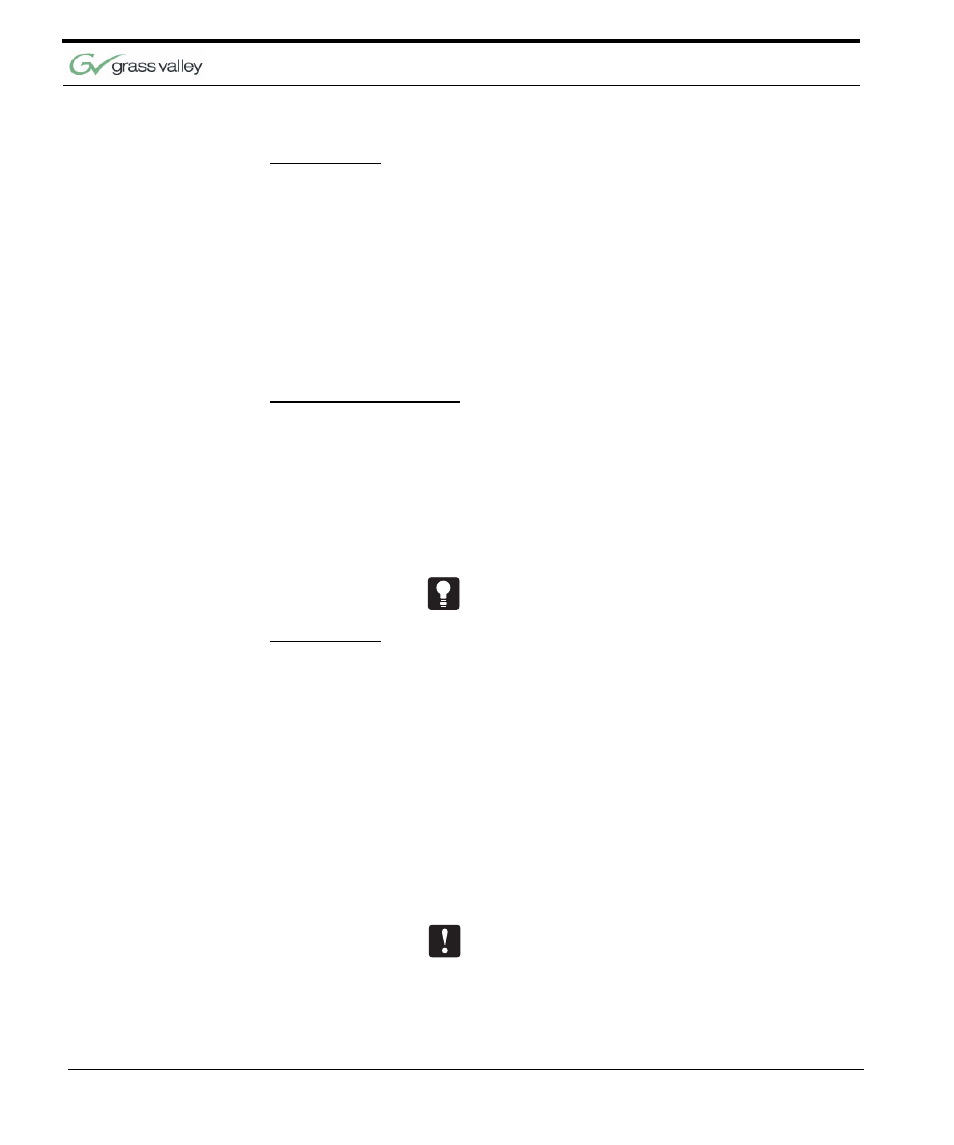Switch bank a, Central control switches, Switch bank b – Grass Valley 3e CameraMan User Manual
Page 30

Chapter 3
22 CameraMan 3e 3-CCD Camera Installation and Operations Manual
Switch Bank A
Central Control Switches
For setting up a camera network, see page 35,
Appendix B: MULTIPLE CAMERA APPLICATIONS.
Switch Bank B
When using multiple cameras networked on the RS-
485 bus, only one camera should have its RF
receiver enabled. Set switch 4 on the other cameras
to UP.
Dip Switch 7
(Baud Rate)
This switch is used to configure the camera’s
Baud Rate for the RS-232 and RS-485 ports.
Switch UP for 19,200 and DOWN for 9600.
(factory default: UP)
Dip Switch 8
(Memory)
For the majority of applications, this switch should
be set to UNLOCK (UP). When DOWN, all
programmed features are locked and cannot be
overridden. (factory default: UP)
Base Unit Address
Use the 16-position rotary switch labeled BASE
UNIT ADDRESS to set the unique identification
number for this CameraMan. If using the optional
Keypad, SHOT Director, or another control
system, refer to the documentation provided with
those accessories for proper configuration.
Dip Switch 1
(Protocol)
Select the communication protocol which will be
used by the RS-232 and RS-485 ports on the
camera. The High Reliability protocol includes
some advanced error checking that is not
performed in the Basic protocol. (factory default:
DOWN)
Dip Switch 4
(RF Command)
When this switch is DOWN, the camera responds
to commands sent from an RF Keypad. When it is
UP, the RF receiver in the camera is disabled and
the camera cannot receive commands directly
from a wireless keypad. (factory default: DOWN)
